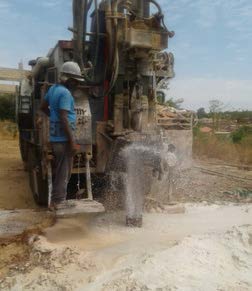The path of the water
Publish date 29-09-2023

A woman carrying a colorful bucket of water, typically on her head. In the imagination she is the emblem, subtly fascinating, of a deep Africa, far from "modernity". Where everyday life is first and foremost fatigue; addressed in some way thanks to an immense ability to live, driven by women, for a change.
There is little that is picturesque in this daily routine. Until not long ago, the path of water took place like this everywhere, since time immemorial. And, everywhere, one of the major steps of real progress has been precisely managing to ensure its safe availability and being permanently suitable for human consumption.
It will be difficult, in the near future, to lighten that burden, which commonly weighs on women, girls, even little girls; in this case also taking away their time for school. But, we can certainly begin to significantly reduce the path. Instead of drawing from some stream and going back towards the village (the waterways stubbornly tend to occupy the valley floor they create), why not do it from a fountain, and from there just go towards home? For those who are well accustomed to a serviceable domestic tap, it may not seem like such an ambitious goal, but the best thing is that, by working well, only healthy water can flow from that fountain. Health is development, to all intents and purposes. A trickle does not refuse its refreshment to anyone, neither men nor animals, much less parasites; a good well, like a good aqueduct, is more selective, and preserves it for those for whom it is built.
Another small, vast step.
We are in Guinea Conakry, Kindia region, in the parish of Sainte Marie du Kanya. The area - and those who live there - has never been able to have truly drinkable water until now.
In collaboration with the parish priest, Père Philippe N'Pouna, a well about sixty meters deep and with a flow rate of up to 3,500 litres/hour was drilled in recent days, which from now on will fully satisfy this vital need of the people ; several thousand, obviously Catholics and non-Catholics.
Pumping is ensured by an immersed electric pump, powered by mains energy, available in the village. We shared the design, and were able to support the drilling effort and the purchase of the pump; but it is the local community, first and foremost the parish, which at the same time takes responsibility for the "protection" works of the well, and the construction of a storage tank, and related pipelines.
This is fundamental: these steps can only be taken together.
Good water management, here as everywhere, takes place only by a community, involved, and responsible day by day for what it feels first and foremost as "its". Thus it will not just be "a well" but the beginning of a new story. Who walks one step at a time, but without wasting time!
Mauro Palombo
NP June / July 2023







